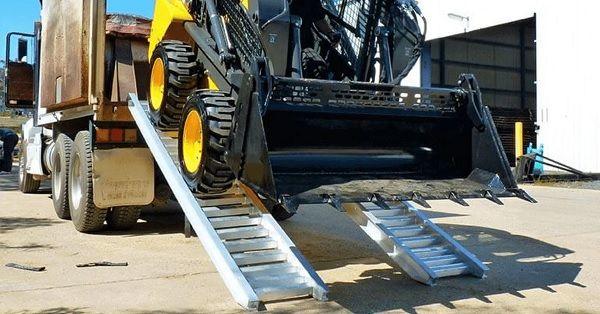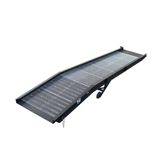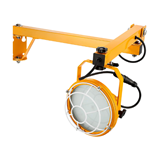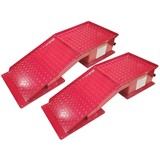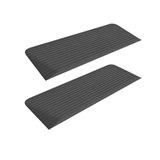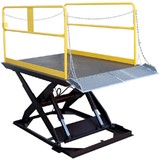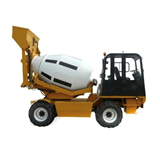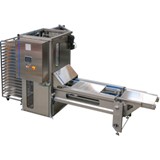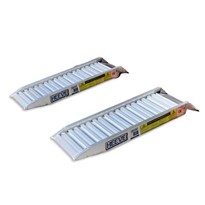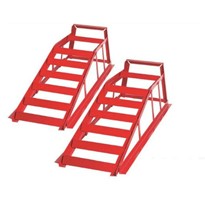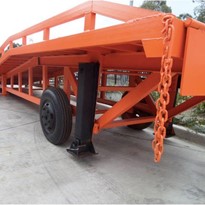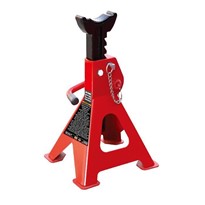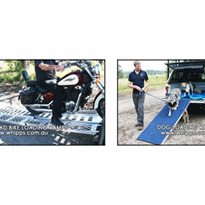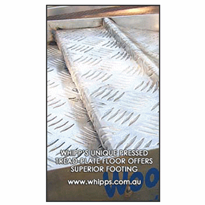You see, loading ramps are often treated as an afterthought. A quick purchase to get the job done. Chuck them in the back of the truck and she’ll be right.
But having a quality pair of loading ramps (and then using them correctly) is crucial to getting the job done safely.
Take it from us, the team at Ramp Champ.
Our CEO, Matthew, was formerly an operator in the civil construction industry. So he knows a thing or two about heavy machinery and loading ramps. He was fed up with shopping around for a decent loading ramp himself, so he created Ramp Champ - Australia’s largest and best ramp retailer.
But enough about us.
Let’s jump into the top 8 mistakes to avoid while using loading ramps.
1. Overloading Them

This first mistake is a biggy. And it’s often where ramp owners go wrong (particularly when they buy super cheap ramps). Overloading your ramps can lead to hairline cracks, bending, wear and tear, damage to your machine or serious injury. Not a great day in the office.
This is why your loading ramps should always, always have a capacity rating. And if they don’t? Well, that’s a red flag in itself.
Find the capacity rating stamp (at Ramp Champ, ours are usually located along the side of the ramps) and compare this to the weight of your machine.
But here’s the thing, the true weight of your machine should also take into account the “wet weight” (things like engine oil, hydraulic oil and fuel) as well as any additional attachments like buckets, hammers and augers. It should also factor in your weight (as the operator).
Basically, anything you plan on taking up and down the ramps needs to be included.
Because your ramp capacity rating isn’t just a “recommendation” or a “nice-to-do.” It’s pretty damn important.
2. Wrong Rung Type

Another mistake we often see is operators loading their steel track machines with ramps that are designed for rubber tracks and tyres.
What’s the big deal, you might be thinking.
Well, the opening and closing action of steel tracks can chew through some alloy ramps, leading to a damaged set of ramps and significant safety concerns. Yikes.
So if you have a steel track machine, make sure you source ramps with specially designed rungs (like our Sureweld Steel Track range).
On the other hand, rubber tracks and tyres are a little more forgiving. You can buy ramps suited to rubber tracks only. But machinery with rubber tracks can also be loaded using steel track ramps (so if you have two different machine types, opt for ramps with steel track rungs).
3. Wrong Length

We’ll try to avoid getting too “mathsy” here… But choosing a ramp length that’s too short will lead to a gradient that’s too steep (thanks for that one, Pythagoras). This will increase your risk of sliding, rolling and serious injury.
What’s worse, a lot of hardware stores will only have one ramp length option on the shelf! And to us, that’s as ludicrous as having one shoe size in a shoe store... It’s just not gonna work for everyone.
You’re looking for a ramp gradient between 16 and 23 degrees, which you can calculate by measuring the height of your tipper (and punching it into our ramp calculator). Easy.
4. Not Checking Over Them

The second problem is failing to notice the damage because you haven’t inspected your ramps for years (and then you continue to use them anyway). Yikes.
So, what signs of damage are we checking for?
- Bending - which commonly occurs on the beams or first 6 rungs (as these cop the brunt of the machine weight).
- Cracks - these can vary in size, from bleeding obvious to minuscule hairline cracks (both are a safety concern)
- Rust - this is often caused by not cleaning mud off your ramps or leaving them out in the weather.
We recommend checking over your ramps - including the beams, rungs and welds - at least every 6 months for signs of wear and tear.
5. Ramps Are Too Narrow

Another “ramp fail” story we hear is operators using ramps that are too narrow for their machinery tracks.
Sure, with a little skill in lining up your tracks it could work. But why take the risk (let alone make things harder for yourself)? You’re at a far greater risk of slipping and sliding this way.
Find out the width of your machine tracks (or if you have multiple machines, the widest tracks of them all) and choose a set of ramps that are wider than this.
6. Incorrect Storage

Alright, maybe you’re using your ramps correctly. The right capacity. The right width. The right rung type. But don’t drop the ball when it comes to storage.
Some of the most common storage mistakes we see are…
- Ramps left out in the sun. Yep, alloy ramps aren’t immune to the harsh Aussie sun. Being left out in the sun can deteriorate and weaken your ramps.
- Sliding around in the back of a truck can dent or crack your ramps, which means they won’t be as sturdy when it comes time to load your machinery. Secure them before you drive off. Simple.
- Water, dirt and mud is unavoidable on a job site. But it can also corrode your ramps if it’s not cleaned away regularly.
7. Lending Them To Mates
You know how it goes. You lend your mate your (insert cherished, personal item) and it comes back with a few extra scratches and dings. Never again, you tell yourself.
Well, the same goes for ramps.
If you’ve spent the time working out the correct capacity, length, width and storage - don’t lend them to a mate who won’t treat them with the same care. Because if they overload them or use them with the wrong track type - you’re probably the one who’ll bear the cost.
But in saying that, if you have a good mate who knows the ins and outs of their machine and it’s suited to your ramps, go for it.
What we’re really saying is be careful who you lend your ramps to (and don’t just hand them out willy-nilly).
8. Attracting Thieves

At Ramp Champ, we have a whole range of lightweight alloy ramps, which really saves your back when you’re lugging them around a job site. You beauty.
But the downside about our ramps being so lightweight? They’re easy for opportunistic thieves to pinch. And we’ve seen a lot of return customers coming back to Ramp Champ after they’ve left their ramps out on show.
Avoid them being stolen by storing them out of sight (both overnight and at the job site).
Get The Right Ramps At Ramp Champ
At Ramp Champ, we’ve met far too many operators who have learnt these mistakes the hard way. Most of the time, they purchase the wrong-sized ramps (and then come to us when they’re in need of a high-quality, suitable fit).
As Australia’s largest and best ramp retailer, we can help you get the right fit from the get-go (and use it safely).
We sell thousands of ramps every year and ship to any location in Australia. Plus, we include a generous warranty period for added peace of mind.
If you’re looking for a set of loading ramps to avoid these pitfalls, check out our range of loading ramps.


